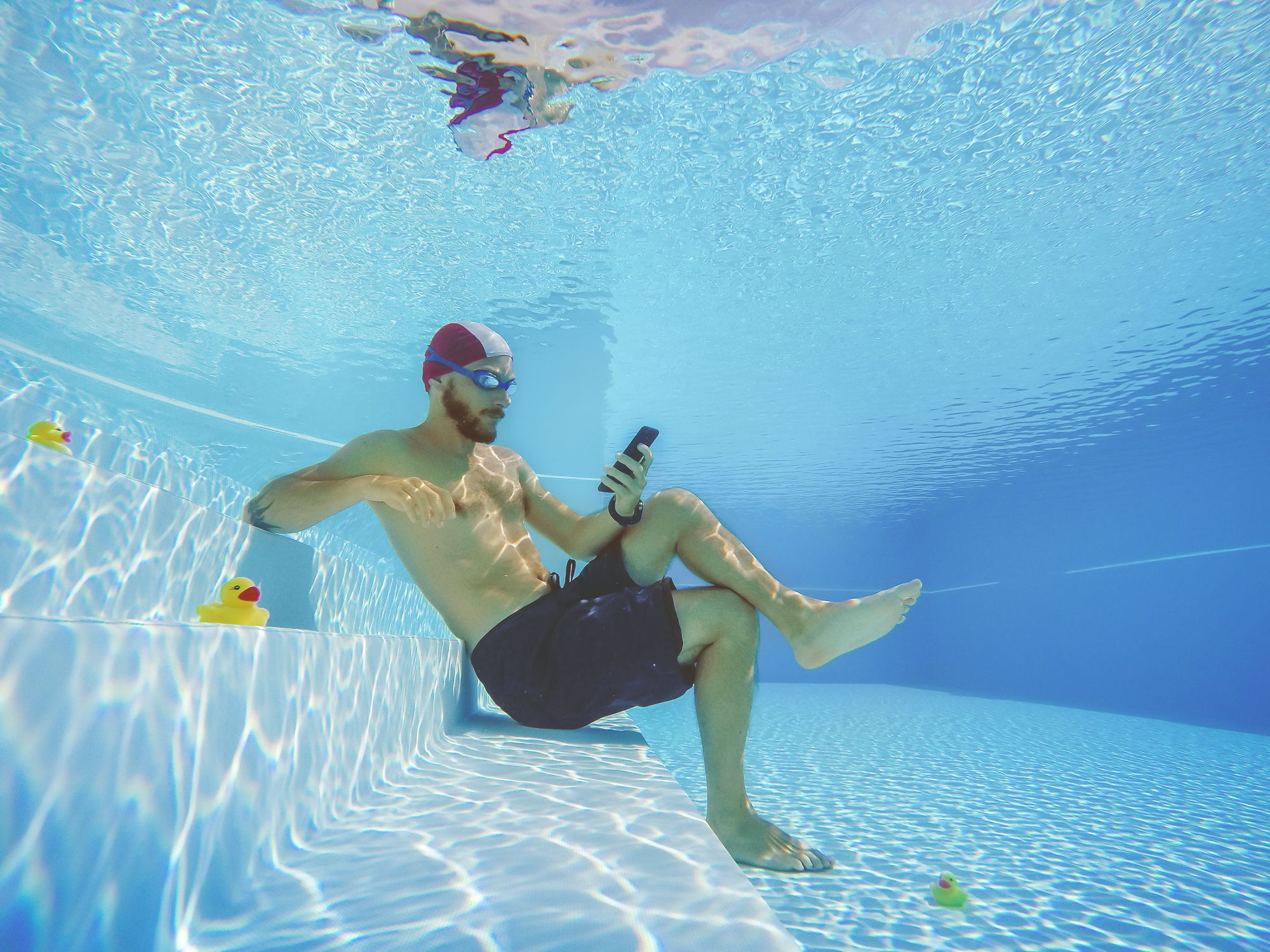Taking photos on land is pretty easy and straightforward, but we’re sure that many of you have come across photos taken underwater where they look really surreal and tranquil and provides a new way to express yourself. If you thought that maybe underwater photos would be hard to capture, that might not be the case.
In fact, thanks to smartphone manufacturers starting to make phones more water-resistant, you can actually capture underwater photos using nothing but your smartphone, and here’s how.
Understand the IP rating of your smartphone
A common feature we’re starting to see with phones these days is that they are getting IP ratings. This IP rating is designed to tell us how water-resistant and dust-resistant a smartphone is, but not all phones have the same IP rating so it’s important to know which your phone has, and what it means.
The most common IP rating phones come with these days are either IP67 or IP68. The first digit in the IP rating refers to dust-resistance. With a rating of “6”, it means that these phones are fully dust-resistant.
The second digit refers to water-resistance and with a rating of “7”, it means that the device can survive underwater of up to 1 meter in depth for a duration of 30 minutes. A rating of “8” means that it can go to depths of up to 2 meters and can stay there for up to 30 minutes.
Take note that to date, there are no smartphones in the market that are 100% waterproof, and the best we’ve seen are phones with an IP68 rating, so you’ll want to make sure that you still have some measure of protection in place.
Choosing a waterproof case
Speaking of protection, while naked phones with IP ratings can withstand submersion underwater, it’s still probably a good idea to have some kind of protection anyway. This is because depending on the quality of the water, while the insides of the phone might be protected, it can still damage the outside of your device.
Given the various designs and shapes that smartphones come in, we’ve selected some of the best waterproof cases that should fit the majority of smartphones out there.
- HAWEEL Professional Underwater smartphone cases
- Vansky Waterproof Phone Pouch
- Submariner Waterproof Phone Pouch
- JOTO Universal Waterproof Pouch
- CaliCase Universal Waterproof Floating Case
- Willbox Professional Waterproof Protective Case
Start shooting!
Now that you understand your smartphone’s IP rating and have chosen a waterproof case, here’s where you can start having fun and take some awesome underwater photos, and here are some tips to get you started.
Understand lighting
With water having the ability to refract light, it means that while a photo might look great on land under the perfect lighting conditions, it might be a completely different story underwater. This means that you’ll be getting more dynamic styles of lighting and sometimes, it can create various lighting effects and patterns that could make your photo look even better.
Unlike the golden hour for land photography which is usually early morning or early evening, the golden hour for underwater photography is around 10am to 2pm, where the sun is at its highest point and will give you the best lighting.
Water clarity
Obviously jumping into murky-looking water means that your photos will be less clear, so pick your location wisely. A clean-looking pool will result in clearer and sharper images. This doesn’t mean that murky water is a bad idea, it can be a great one depending on the kind of shot that you’re looking to take and the kind of mood or emotions you’re trying to evoke.
Dynamic angles
While underwater, you clearly have more freedom to move about than on land, where you can go above or below your subject. This means that you’re free to experiment with more angles to help create a dynamic-looking photo with more movement and also different perspectives.
Other things to consider
Before you start taking underwater photos, here are some other considerations you’ll want to take into mind.
- Fully charge your smartphone – Depending on how long you plan to stay underwater, making sure you have a full charge means you have to worry less about your phone running out of juice midshot.
- Launch the camera app before putting it in its case – Depending on the case you’ve chosen, some cases might make it harder for you to access the screen while in its case. This means you’ll want to ensure the camera app is open before you dive underwater so that you won’t have to resurface and shuffle things around again.
- Use the volume button to take photos – A lot of phones these days offer a physical button shortcut to take photos aside from tapping the on-screen shutter button. Similar to the tip above, some cases might make it hard for you to interact with the screen even underwater, so using a physical button like the volume rocker to take a photo can be useful.
- Clean your lens – Because of how your camera’s lens needs to shoot through the case, to make sure that you have the clearest and sharpest image possible, give your lens a good clean to remove any smudges or debris before putting it in its case.
- Take burst photos – As it would be impossible for you or your subject to stay perfectly still underwater, don’t be shy about using burst shots to capture as many photos as you can so that when you’re back on land, you have more options to choose from to pick the best-looking photo.
Note: this article may contain affiliate links that help support our authors and keep the Phandroid servers running.











Comments